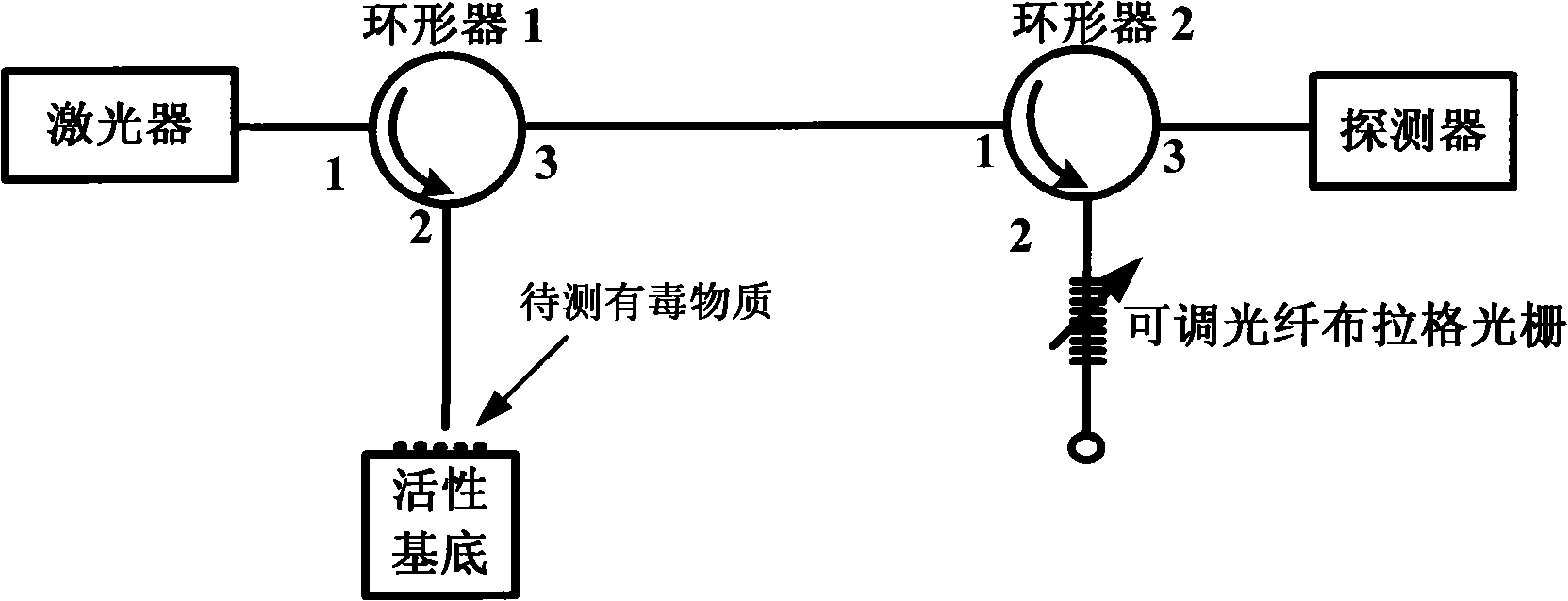Method and device for detecting nanostructured staying quality poison material
A technology of toxic substances and nanostructures, applied in Raman scattering, material excitation analysis, etc., can solve the problems of not giving full play to the advantages of optical fiber technology, and achieve the effect of high measurement accuracy
- Summary
- Abstract
- Description
- Claims
- Application Information
AI Technical Summary
Problems solved by technology
Method used
Image
Examples
Embodiment Construction
[0011] see figure 1 .
[0012] The laser is used as an excitation light source for toxic substances to couple the laser light into the optical fiber. The laser enters the first circulator from port 1 of the first circulator, and is output from port 2. After being transmitted through the optical fiber, the laser is irradiated on the nano-substrate with toxic substances , due to the surface-enhanced Raman scattering effect to generate Raman signal light, the Raman signal light with a frequency shift relative to the frequency of the excitation light source is collected by the optical fiber and then input from port 2 of the first circulator, output from port 3, and then enters through the optical fiber The port 1 of the second circulator reaches the tunable fiber Bragg grating from the port 2 of the second circulator, and the signal light is made by adjusting the reflection center wavelength of the tunable fiber Bragg grating (the bandwidth of the tunable fiber Bragg grating is ge...
PUM
 Login to View More
Login to View More Abstract
Description
Claims
Application Information
 Login to View More
Login to View More - R&D
- Intellectual Property
- Life Sciences
- Materials
- Tech Scout
- Unparalleled Data Quality
- Higher Quality Content
- 60% Fewer Hallucinations
Browse by: Latest US Patents, China's latest patents, Technical Efficacy Thesaurus, Application Domain, Technology Topic, Popular Technical Reports.
© 2025 PatSnap. All rights reserved.Legal|Privacy policy|Modern Slavery Act Transparency Statement|Sitemap|About US| Contact US: help@patsnap.com

